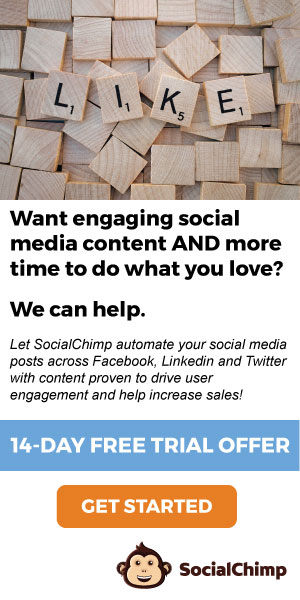For the past decade, it almost seemed like content sites were popping up every day. Some trying to compete with the big players, some that were trying to make a buck and some designed to slowly grow as a pet project for a mom (or to be gender neutral) or dad sitting at the house while the kids are asleep and needing a creative release. The challenge is that the enormous amount of content online has flooded the web with lower values website and a sense that there is no longer uniqueness in the online space.
The Beginning
My name is Matt Arceneaux and I’m the CEO of 301 Digital Media. I’ve been involved in the digital marketing and advertising industries for over 2 decades now, primarily specializing in website growth, development and monetization. In the last few years, though, I have seen an incredible consolidation and monopolization of the digital media industry.
About 5+ years ago, ‘critical mass’ for an emerging website was around 1 million monthly unique visitors, a daunting if not unachievable goal. (When you break it down to ~34k visitors a day, it doesn’t seem that hard.)
Fast forward to today, and the landscape of digital media has quickly consolidated. While 1 million was once a respectable number, the bar seems to have been raised even higher: sites now need to be around 5 million monthly unique visitors to get secure advertisers and possibly turn heads and capture attention. (An ongoing reflection of the consolidation across the media industry.)
The biggest negative result of the need to scale is ongoing erosion of CPMs. A few years ago, CPMs on blogs and smaller websites with quality, organic audiences (social, SEO, email) were strong. About a year ago, things really started to change. Revenue was starting to slide even on sites where audiences were growing.
The advertisers that worked with smaller sites and blogs started to slip away as well. At every turn we were seeing ad networks laying off and shutting down, yet the economy was growing. A lot of this was due to the over-saturation of ad networks but revenue was a growing problem that was affecting the profitability of these and many other sties.
The Changing Revenue Landscape
The number one way that bloggers and larger websites monetize their websites is display advertising (banner ads etc). They get advertising through ad networks or Google Adsense. A few years ago, you would sell about 90% of your ad inventory (defined as the number of ads spaces you have available on your site to fill) and get about $1–2.50 CPM (CPM — the revenue you receive for 1,000 impressions). Fast forward to today and you are lucky to sell 50% at that same rate. The rest will sell through at about $0.50. This does not apply to those publishers and sites that have greater than 5 million monthly uniques and/or sites that have been around since the start of the internet back in the 90’s (yes, I know Arpanet was earlier but have you ever heard of someone buying banner ads on Arpanet?). The better ad networks and advertisers that pay the premium CPMs have been tightening up on where they advertise. Now they want the cream of the crop.
One other significant issue with smaller sites trying to monetize at the higher rates is ad fraud. See, when you hear of all the bad players out there trying to make a buck by buying fake, robotic traffic and providing millions and millions of ad impressions daily, it lowers the value of ad inventory across the board. It is the basic theory of supply & demand. Due to having SO much supply because of the fraudsters, it lowers the CPMs that you get. Also, because robots do not buy that jacket you saw in your retargeted LL Bean ad, advertisers have been paying less as the conversion rate lowers with the bad guys out there.
The Negative Influences on Enterprise Value
I define enterprise value as how much value is places on a company by the assets contained within. There are a number of things that can negatively affect enterprise value. Revenue, EDITDA and product quality. The problem is that there are so many market conditions that can affect enterprise value and keep those who are looking for a successful sale up at night.
Influence # 1 — Oversaturated Market
Think of it this way. Investors, buyers and tire-kickers all want to buy something that is unique. Something that either has little to no competition or a business that does it so much better than the competition, someone else would have to spend an enormous amount of money to come close to catching up. As I mentioned at the beginning of this article, there are so many content sites that are over saturating the market. No longer is a food site unique. For every blog you setup, there is 100 people in the next 24 hours trying to set up the same thing. Want to write about your peanut farm? Dangit, someone just set up a blog about that while I was typing. Just remember, is your site unique? Do you have a huge market share or do you do it better than anyone?
Influence # 2 — Revenue Challenges with Valuations
There are many challenges relating to revenue that will lower your value significantly. When someone puts a value to your website, they will typically work on a multiple of EBITDA (translated: before tax profit). Sites a few years ago were selling for 4–8x annual EBITDA. By way of example, lets say you had a blog that made $100,000 annually and had $40,000 in expense/overhead. Your EBITDA would be $60,000. The value you would place on your site would be between $240–480,000. I will not bore you with what end of that range you would fall under but you know if you are on the high side or low side based on how kick ass your site is. Now days, not only has the multiples gone down, between 3–5x, the revenue has been suffering based on the previous section so that funny little acronym (EBITDA for the slow ones) has a smaller value.
Influence #3 — Quality & Type of Content
Many times, site owners think it is just about getting a mass amount of content out there. The challenge is that this theory may get you some eyeballs from Google but relying solely on bulk, non-meaty content is something buyers shy away from. They want meat, they want quality and they want something they can sink their teeth into. Video, newsletter subscribers, mobile apps and a huge social following have all been know to raise the interest of prospective buyers. Remember through, at the same time, you will need to produce LOTS of content to win market share on social media. With big brands publishing — in some cases — hundreds of pieces of content today, it can be easy to have your 1–2 posts get swallowed in the social media noise. Have content that solves a problem, not that just exists for passive reading. It may not translate to a specific dollar to add to your value calculation but it helps attract buyers. It is almost like selling a house. If you have a pool, most likely you will not get more money for your house than an exact house without but you will get more people interested as the enterprise value of your house is higher.
Influence #4 — Audience Mix
First, if you rely heavily on audience extension for your site traffic (paid marketing via Google, Outbrain, Yahoo etc.), you will almost eliminate your enterprise value. When you can flip a switch and your business goes away, buyers/investors will stay far away from you. One other negative trait are sites that rely on search traffic alone. Sure you will generate some revenue. Yes, you can play the SEO game and get significant traffic to your site but if Google changes their algorithm, your traffic goes away. This really makes potential buyers nervous. Buyers, private equity firms and investors use to be less educated and would buy pure search traffic content sites. As more and more were burned by Google updates, they have grown smart. Buyers and investors want social, they want referrals from bigger sites and they want people that come direct for very specific reasons. They love subscriptions the best but I will hold off on that topic for another day.
A good rule of thumb if that no one traffic source ought to account for more than 20–25% of your overall traffic — the old ‘don’t put all of your eggs in one basket’ adage.
Going back to value of a blog or website, here is what I would do to get your value up:
- Stay hyper-focused on a very specific topic. You may never compete with WebMD or Huffington Post but you can win on a specific illness or lifestyle topic. One of our most successful sites is fibromyalgiatreating.com. A resource for people suffering from Fibromyalgia. It may have an audience ceiling but you can have one powerful, valuable site.
- Do not worry about revenue. The biggest issue is people think ‘I’ll just add one more ad on this right rail’. Each time you have an external call out from your site. Then that slows down your site. Slower site = Google puts you in time out etc. You can see the path. My philosophy, Stay clean. Wait for your payday when you sell. That does not mean have one ad on a page but try to say with 3 surrounding your content and maybe one inline
- The three legs of revenue. I believe you always need three revenue streams to be successful and to create safeguards if one area drys up. The fastest three that come to mind with content sites are 1) display ads 2) e-commerce/affiliate and 3) sponsored content
- The last recommendation is be passionate about your site. It will show when you have to pitch your site to a potential seller or investor. So don’t sell them on your content, sell them on you and your passion. They are very smart and will see your success in the financials and user analytic data.
Have a topic you would like me to cover, let me know @ [email protected]


